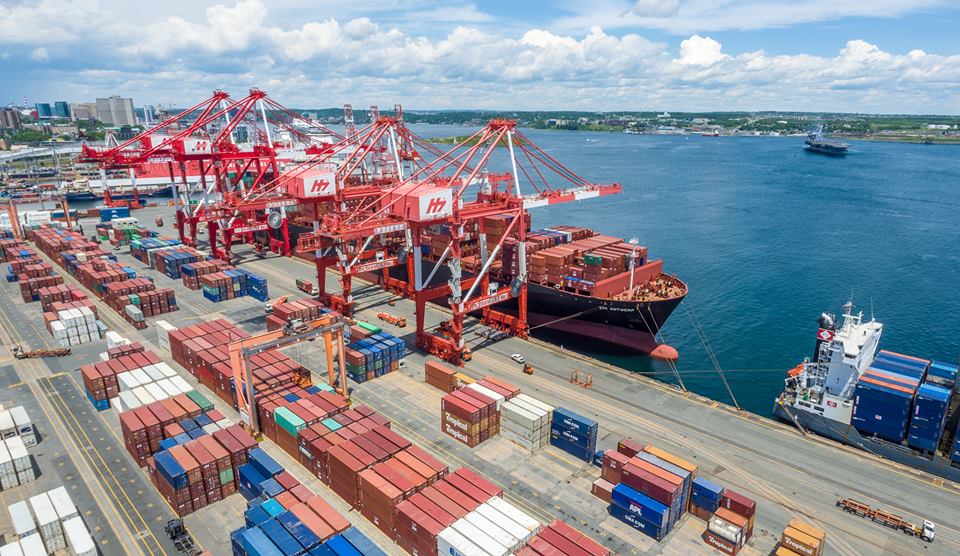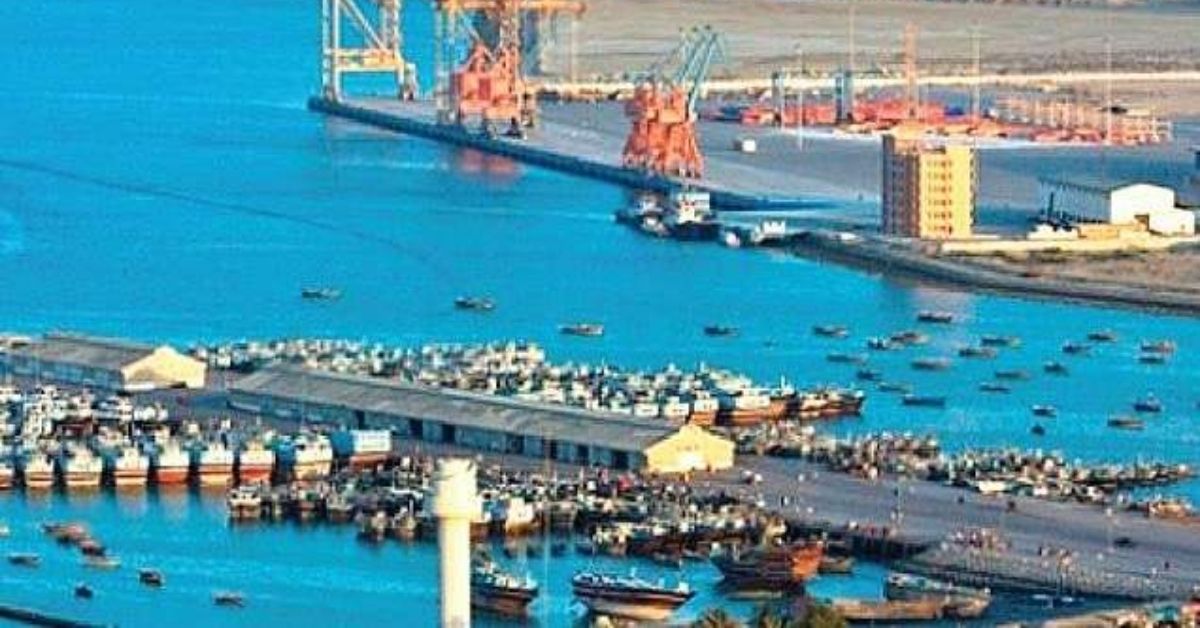Ministry of Maritime Affairs (MoMA) performs various duties, which include licensing and developing National ports and coastal areas, strengthening seaborne trade, utilizing marine resources, and ensuring security and safety (MoMA, 2022) of maritime trade. The Ministry of Ports and Shipping was established as an independent federal ministry of Pakistan in 2004.
Later, in 2017, it was restructured and replaced with the Ministry of Maritime Affairs. MoMA’s head office is in Islamabad. As it has links to seaports, a separate division, and several attached departments have been established in Karachi. MoMA has two wings, National Center for Maritime Policy Research (NCMPR) Islamabad and NCMPR Karachi (NCMPR, 2017).
NCMPR Karachi is a body that has a role in identifying potential hurdles in this sector, while NCMPR sets principles and guidelines by performing research in the maritime domain (Azmie, 2017).
ORGANIZATIONS
Pakistan Marine Academy
It was established as ‘The Mercantile Marine Academy’ in 1962 at Chittagong. Then it was shifted to Mirpur Road, Karachi, in June 1978(Lodhi, 1991). This is the only public institution in the country that provide training to Seafarers.
Its curriculum includes both theoretical and practical training for Seafarers. It produces around 150 Seafarers annually for the national and international maritime departments and is one of the internationally recognized institutes (Academy, 2021).
Pakistan National Shipping Corporation (PNSC)
PNSC is the national flag carrier of Pakistan. It was established by the unification of the National Shipping Corporation (NSC) and Pakistan Shipping Corporation in 1979 through Pakistan National Shipping Corporation Ordinance No. XX, 1979 [Gazette of Pakistan, extraordinary Part I, 29 March 1979], protected by the constitution(Corporation, 2015).
It is responsible for trading cargo worldwide (Yousuf, Ali, & Management, 2020). Its aim is to become a prime stakeholder in the world’s Maritime industry.

Port Qasim Authority
An Act of parliament on 29 June 1973 set up this port. It is in Karachi’s phitti creek of the Indus delta region. Its operation was started to import raw materials for Pakistan’s Steel Mill. Later, various elements were included, such as minerals oils, edible oil, coal, rice, wheat, cement to fertilizers, general cargo, containers, and LNG.
This is the only port in Pakistan for LNG and contributes to more than 90% of the country’s external trade(Authority, 2022). Port Qasim is genuinely a “Gateway to National Prosperity.”
To be a dynamic, modern, fully integrated port facility; preferred choice for its business partners and stakeholders; facilitating synchronized development contributing to the economic progress of Pakistan, leading to prosperity. ~Syed Hasan Nasir Shah (CHAIRMAN PORT QASIM)
Karachi Port Trust
Karachi Port was regulated by Karachi Harbor Board between 1980 to 1988. After that, it was established in 1887 by the Act-IV of 1886. A chairman and 10 trustees (from the public and private sectors) operate that port (KPT, 2019).
Its mission statement is, The Landlord Port Strategy pursues to lease out port infrastructure, land, access, and assets to private port operators long-term while retaining regulatory functions.

Gawador Port Authority (GPA)
Gwadar is located on the shores of the Arabian Sea in Balochistan, about 533 km from Karachi and 120 km from the Iranian border. It was established on 17 October 2002 after proclaiming GPA ordinance No. LXXVII of 2002. It was formed to perform Gawador deep port operations. GPA has been Pakistan’s most potent framework since its birth. After completion, it will be one of the biggest maritime hubs in the world (GPA, 2022).
Directorate General Port and Shipping
This is the administrative authority of the Ministry of Maritime Affairs and is the center of attention to connect MoMA with the International Maritime Organization (IMO). Besides policy-making and legalizations, it is the primary regulator of MoMA and implements oversees IMO conventions. Its mission is to emerge as a world-class maritime administration committed to continuous improvement.
Their goals are the Incorporation of International Conventions into National Legislation, implementation of National Laws, development of the Shipping Industry, availability of Qualified Maritime Professionals, safety of Navigation, protection of the Maritime Environment, and Ship & Port Security (S, 2022).
The Korangi Fisheries Harbour Authority and Marine Fisheries Department
Both departments are responsible for planning, construction, operation, management, maintenance, and exploiting fisheries resources. Their primary focus is to enhance the export of fish-related products to increase revenue. Their duties include reviving fish stock in Pakistani water systems by adopting modern and safe fishing techniques.
Areas of Improvement
Fisheries and Aquatic Resources Conservation
Oceans have the most ancient and diverse forms of life on earth, as it holds more than 1.4 -1.6 million species (Appeltans et al., 2012). Economic development has resulted in the overexploitation of marine resources. Marine biological resources are reduced due to land-based pollution, habitat destruction, invasive species, and fishing pressure (Friedlander, 2018).
“The greatest danger to our planet is the belief that someone else will save it.” ~Robert Swan
Due to economic rehabilitation, Pakistan’s maritime sector is overgrowing. Especially Gawador port to finalize the CPEC project. The Ministry of Maritime Affairs and attached departments should maximize its benefits through maritime activities without disturbing the resource base: the ocean itself. For that, an integrated Maritime Policy is required.
The merging of the Environmental Protection Agency and Punjab Fisheries Department with The Korangi Fisheries Harbour Authority and Marine Fisheries Department and bringing the concerned departments under the same faculty would protect fish and other biological elements of the sea.
To implement an Integrated Maritime Policy, there is a need to develop a link between fisheries policy, environment agency set protocols, and all maritime activities.
Utilization of Biological Resources
The most overlooked segment of the Maritime department is diverse biological resources. These biological resources include flora and fauna, their interaction with the environment, and behavioral effects due to surrounding influence.
Macroalgae (or seaweeds) and microalgae, seagrasses, emergent vegetation, gastropods (snails), cephalopods (squid and octopus), crustaceans (lobsters and crabs), sponges, corals, and fish habitats are included in essential biological resources(Zhong, 2019).
These organisms are not only involved in the food chain but also help in remitting oceanic pollution caused by human activities. Moreover, these resources can be utilized in various sectors such as pharmaceuticals, cosmetics, aesthetics, fertilizers, health, agro-food, aquaculture, and abundant biotechnological processes.
The blue economy generates about 566 billion euros and 3.5 million jobs annually. Modern research institutes such as National Centre for Maritime Policy Research Islamabad should be collaborated with the ministry of maritime affairs to utilize these biological resources.
Tourism
Marine tourism is an integral part of the global tourism industry. The Maldives, the Indian State of Kerala, Singapore, and Thailand have focused on their coastal tourism industry and earned countless revenue from it. Pakistan also has great potential for marine tourism. It possesses a variety of cultural, natural, and religious resources. Various ethnic groups at coastal sites may attract tourists around the world (Fatima & Akhtar, 2021).
“The travel and tourism industry is a high part of our economy.” ~Karen Hughes
A modernized city is being constructed near Gawador port with the international standard airport and many other facilities. The ranking of Pakistan in terms of World Tourism Income is 125th. World Travel & Tourism Council calculated Pakistan’s GDP as 3.1% in 2013 and World Data Atlas as 7.4% contributed by tourism.
To enhance tourism in the country, a strategic plan needed to be developed by the National Tourism Coordination Board (NTCB) based on the principles of sustainable tourism development. There is a demand to establish a Maritime Tourism board to regulate all the stakeholders.
References
- Appeltans, W., Ahyong, S. T., Anderson, G., Angel, M. V., Artois, T., Bailly, N., . . . Berta, A. J. C. b. (2012). The magnitude of global marine species diversity. 22(23), 2189-2202.
- Fatima, N., & Akhtar, M. J. P.-J. (2021). Maritime Tourism: Global Success Stories and the Case of Pakistan. 2(1), 1-1.
- Friedlander, A. M. J. M. p. b. (2018). Marine conservation in Oceania: Past, present, and future. 135, 139-149.
- Zhong, H. (2019). Exploitation and utilization of marine resources and protection of marine ecology. Paper presented at the IOP Conference Series: Earth and Environmental Science.
- Appeltans, W., Ahyong, S. T., Anderson, G., Angel, M. V., Artois, T., Bailly, N., . . . Berta, A. J. C. b. (2012). The magnitude of global marine species diversity. 22(23), 2189-2202.
- Academy, P. M. (2021). About. Retrieved from https://marineacademy.edu.pk/
- Appeltans, W., Ahyong, S. T., Anderson, G., Angel, M. V., Artois, T., Bailly, N., . . . Berta, A. J. C. b. (2012). The magnitude of global marine species diversity. 22(23), 2189-2202.
- Authority, P. Q. (2022). Introduction. Retrieved from https://www.pqa.gov.pk/en/about-us/introduction
- Azmie, S. A. (2017). Maritime Awareness In Pakistan. CISS Insight Journal, 5, 62-85.
- Corporation, P. N. S. (2015). HOME. Retrieved from https://pnsc.com.pk/default.html
- Fatima, N., & Akhtar, M. J. P.-J. (2021). Maritime Tourism: Global Success Stories and the Case of Pakistan. 2(1), 1-1.
- Friedlander, A. M. J. M. p. b. (2018). Marine conservation in Oceania: Past, present, and future. 135, 139-149.
- GPA. (2022). Vision and mission. Retrieved from http://www.gwadarport.gov.pk/vision.aspx
- KPT. (2019). Mission Statement. Retrieved from https://kpt.gov.pk/pages/35/mission-statement
- Lodhi, P. K. (1991). Proposed training of cadets on the ship handling simulator of the Pakistan Marine Academy.
- MoMA, G. (2022). Introduction. Retrieved from https://www.moma.gov.pk/Detail/NzIxMTIzM2EtMjQwOC00MjUyLTlhOTctMTViNzVkYzA2NmIy
- NCMPR. (2017). Objectives. Retrieved from https://www.bahria.edu.pk/ncmpr/objective/
- S, D. A. (2022). About Us. Retrieved from https://dgps.gov.pk/Detail/Mjk2OGRlYTgtZjdjMC00ODg1LThmNWQtYTY4YjI3YzEwZmM4
- Yousuf, M. A., Ali, T. J. J. o. M., & Management. (2020). Downfall of Local Shipping Industry of Pakistan-A Case Study of Pakistan National Shipping Corporation. 11(1).
- Zhong, H. (2019). Exploitation and utilization of marine resources and protection of marine ecology. Paper presented at the IOP Conference Series: Earth and Environmental Science.

Maqbool Ahmad is a Marine Biotechnologist. He is an Erasmus student in Marine Biotechnology at Universidad Católica de Valencia, Spain. His main interests are to utilise multidisciplinary approaches to bring innovation in the field of marine biology.

